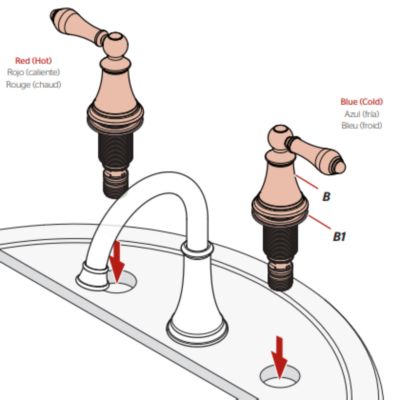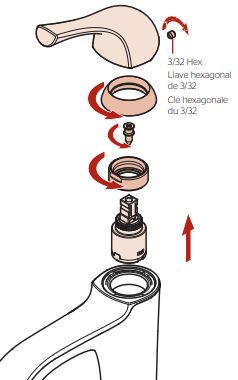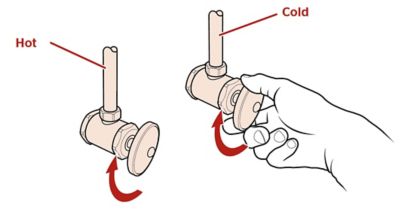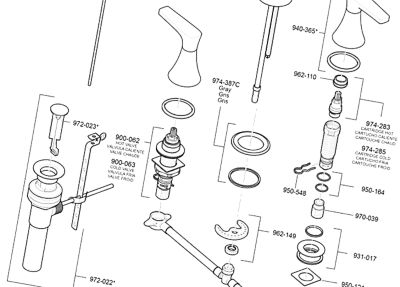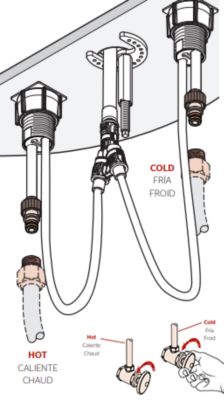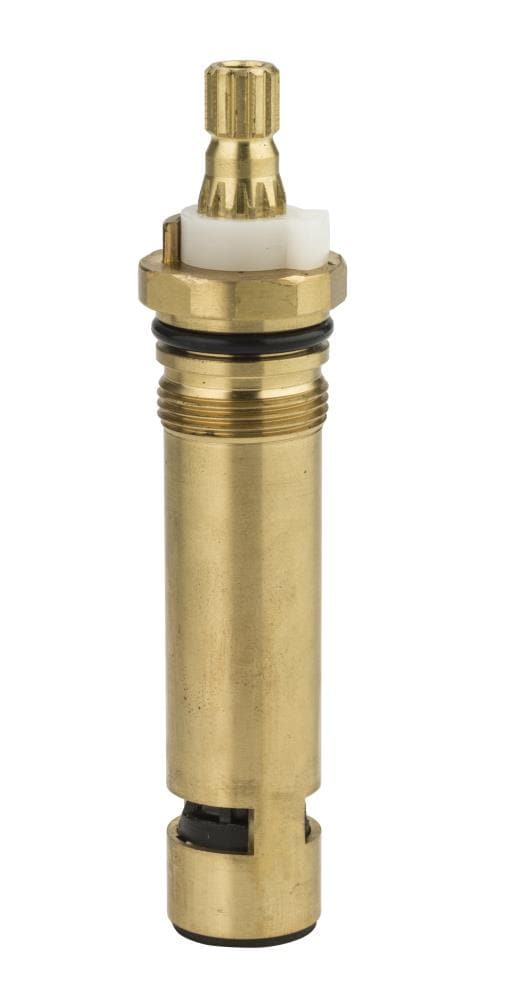Identifying the Source of the Leak in Your Price Pfister Bathroom Faucet
A leaky faucet can be a frustrating and wasteful problem in any bathroom. Before you can fix the issue, it’s essential to identify the source of the leak in your Price Pfister bathroom faucet. Here’s a guide to help you pinpoint the problem:
- Check the Spout: Start by examining the spout of your Price Pfister faucet. Turn on the water and observe if any water is leaking from the spout while the faucet is in use. If you notice water dripping or flowing continuously from the spout, the leak is likely originating from within the faucet itself.
- Inspect the Handles: Next, check the handles of the faucet. Sometimes, leaks can occur around the handles due to worn-out seals or loose connections. Turn the handles on and off and see if any water is seeping out around the base of the handles. If you detect leaks in this area, it may indicate that the handles need to be tightened or that the seals inside the handles need to be replaced.
- Examine the Base: Another common area for leaks in Price Pfister faucets is around the base of the faucet where it meets the sink or countertop. Look for signs of water pooling or dripping around the base of the faucet. If you notice any moisture in this area, it could indicate that the faucet’s O-rings or seals are worn out and need to be replaced.
- Check Underneath the Sink: In some cases, leaks in Price Pfister faucets may originate from connections underneath the sink. Inspect the supply lines and connections leading to the faucet for any signs of water leakage or dripping. Tighten any loose connections and replace any damaged or worn-out components to prevent further leaks.
- Test with Tissue Paper: For smaller or harder-to-detect leaks, try using tissue paper to identify the source of the leak. Place a piece of dry tissue paper around various parts of the faucet, including the spout, handles, and base. Run the faucet, and if the tissue paper becomes wet in any particular area, it can help pinpoint the location of the leak.
Essential Tools and Materials Needed
Fixing a leaky Price Pfister bathroom faucet requires the right tools and materials to ensure a successful repair. Before you begin, gather the following essentials:
Adjustable Wrench: An adjustable wrench will be indispensable for loosening and tightening nuts and bolts during the repair process. Choose a wrench that fits securely around the various components of your Price Pfister faucet.
Phillips and Flathead Screwdrivers: These screwdrivers will be needed to remove screws and access internal components of the faucet. Make sure you have both types on hand to accommodate different screw types.
Replacement Parts: Depending on the source of the leak, you may need to replace various components of your Price Pfister faucet, such as O-rings, seals, cartridges, or washers. Purchase the necessary replacement parts ahead of time to avoid delays during the repair process.
Plumber’s Tape: Plumber’s tape, also known as Teflon tape, is essential for creating a watertight seal on threaded connections. Wrap a few layers of plumber’s tape around the threads of any fittings or connections to prevent leaks.
Grease or Lubricant: A small amount of grease or lubricant can help ensure smooth operation of moving parts within the faucet, such as cartridges or valves. Apply a thin layer of grease to these components before reassembling the faucet.
Bucket and Towels: Keep a bucket and towels handy to catch any excess water or debris that may come out during the repair process. This will help prevent messes and make cleanup easier afterward.
Safety Gear: While not always necessary, it’s a good idea to wear safety goggles and gloves when working on plumbing fixtures to protect yourself from potential hazards such as flying debris or chemicals.
Guide to Repairing a Leaky Price Pfister Bathroom Faucet
Repairing a leaky Price Pfister bathroom faucet is a manageable task that can be completed with some basic plumbing knowledge and the right tools. Follow this step-by-step guide to fix your leaky faucet:
Turn Off the Water: Before you begin any repairs, shut off the water supply to the faucet. Locate the shut-off valves underneath the sink and turn them clockwise to close them completely. Then, turn on the faucet to drain any remaining water from the lines.
Disassemble the Faucet: Use a Phillips or flathead screwdriver to remove any decorative caps or handles covering the screws on the faucet handles. Once the screws are exposed, use the screwdriver to remove them and detach the handles from the faucet. Set the handles aside.
Inspect the Cartridge or Valve: With the handles removed, you’ll have access to the cartridge or valve assembly inside the faucet. Inspect the cartridge or valve for any signs of wear, damage, or buildup. If necessary, use a wrench to loosen and remove the cartridge or valve from the faucet body.
Replace Seals or Components: If the cartridge or valve is worn out or damaged, replace it with a new one. Be sure to use the correct replacement part for your Price Pfister faucet model. Additionally, inspect any O-rings, seals, or washers for damage and replace them as needed.
Apply Plumbers Tape: Before reassembling the faucet, apply a few wraps of the plumber’s tape to the threads of any fittings or connections to create a watertight seal. This will help prevent leaks from occurring around these areas.
Reassemble the Faucet: Once all necessary repairs have been made, reassemble the faucet in the reverse order of disassembly. Install the new cartridge or valve, ensuring it is properly seated and aligned. Then, reattach the handles and secure them in place with the screws.
Turn On the Water: Once the faucet has been reassembled, turn the water supply back on by opening the shut-off valves underneath the sink. Turn on the faucet and check for any leaks or drips. If everything looks and functions properly, your repair is complete.
Common Issues and Troubleshooting Tips
While Price Pfister faucets are known for their durability and reliability, they can still experience occasional leaks due to wear and tear or improper installation. Here are some common issues and troubleshooting tips for addressing Price Pfister faucet leaks:
Dripping Spout: If your Price Pfister faucet is leaking from the spout, it may be due to a worn-out cartridge or valve. Try tightening the handle screws or replacing the cartridge to see if that resolves the issue. If the leak persists, it may indicate a more significant problem with the faucet’s internal components that requires professional attention.
Leaks Around Handles: Leaks around the handles of a Price Pfister faucet are often caused by worn-out seals or loose connections. Try tightening the handle screws or replacing the seals to see if that stops the leak. If the problem persists, it may be necessary to disassemble the faucet and inspect the internal components for damage or deterioration.
Base Leaks: Leaks around the base of the faucet where it meets the sink or countertop can be caused by worn-out O-rings or seals. Inspect these components for damage and replace them if necessary. Ensure that the faucet is properly seated and secured to the sink or countertop to prevent further leaks.
Supply Line Leaks: Leaks in the supply lines leading to the faucet can occur due to loose connections, damaged fittings, or worn-out washers. Inspect the supply lines and connections for any signs of leakage and tighten or replace any damaged components as needed.
Water Pressure Issues: In some cases, leaks in Price Pfister faucets may be caused by fluctuations in water pressure. Check the water pressure in your home and adjust it if necessary to ensure it falls within the recommended range for your faucet model. Excessive water pressure can put a strain on the faucet’s internal components and lead to leaks over time.
Corrosion and Mineral Buildup: Over time, corrosion and mineral buildup can affect the performance of Price Pfister faucets and lead to leaks. Clean the faucet regularly to remove any buildup or debris that may be causing obstructions or blockages. Consider installing a water softener if your home has hard water to help prevent mineral deposits from forming inside the faucet.
Preventative Maintenance Tips
Preventative maintenance is key to keeping your Price Pfister bathroom faucet in top condition and preventing leaks from occurring. Here are some essential maintenance tips to help keep your faucet leak-free:
Regular Cleaning: Clean your Price Pfister faucet regularly to remove dirt, debris, and mineral buildup that can cause leaks and affect performance. Use a mild soap and water solution and a soft cloth to wipe down the faucet and remove any buildup. Avoid using abrasive cleaners or harsh chemicals that can damage the finish of the faucet.
Inspect for Leaks: Periodically inspect your Price Pfister faucet for any signs of leaks or drips. Check around the spout, handles, and base of the faucet for moisture or water pooling, which may indicate a leak. Address any leaks promptly to prevent them from worsening and causing damage to your sink or countertop.
Tighten Loose Connections: Regularly check the connections underneath the sink to ensure they are tight and secure. Use a wrench to tighten any loose fittings or connections that may be contributing to leaks. Pay attention to supply lines, shut-off valves, and faucet connections, and tighten them as needed to prevent leaks from occurring.
Replace Worn-Out Components: Over time, the internal components of your Price Pfister faucet, such as cartridges, O-rings, and seals, may wear out and require replacement. Keep an eye on these components and replace them as needed to maintain the integrity of the faucet and prevent leaks from occurring.
Adjust Water Pressure: High water pressure can put a strain on your Price Pfister faucet and lead to leaks over time. Use a water pressure gauge to measure the water pressure in your home and adjust it if necessary to ensure it falls within the recommended range for your faucet model. Lowering the water pressure can help prolong the life of your faucet and prevent leaks from occurring.
Install a Water Softener: If your home has hard water, consider installing a water softener to help prevent mineral buildup inside your Price Pfister faucet. Hard water can contribute to corrosion, scale, and mineral deposits that can affect the performance of the faucet and lead to leaks over time. A water softener can help protect your faucet and extend its lifespan.
Bathroom – My Single Handle Bathroom Faucet is Leaking or Dripping
Bathroom – Faucet is Leaking or Dripping
How to fix a Leaking Price Pfister Shower Valve
Troubleshooting Issues About Your Faucet Pfister Faucets
Bathroom – Faucet is Leaking or Dripping
Pfister Pfister-General Multiple Materials Faucet Cartridge Repair
HOW TO FIX A LEAKY DRIPPING WATER FAUCET PFISTER PRICE
Related Posts:
- Best Waterfall Bathroom Faucets
- Old Bathroom Faucet Types
- How To Replace Cartridge In Delta Bathroom Faucet
- Vintage Bathroom Faucet Handles
- Repair Moen Double Handle Bathroom Faucet
- Antique Wall Mounted Bathroom Faucets
- American Standard Bathroom Faucet Leaking
- Chateau By Moen Bathroom Faucet Repair
- Antique Nickel Bathroom Faucets
- Single Hole Bathroom Faucet


